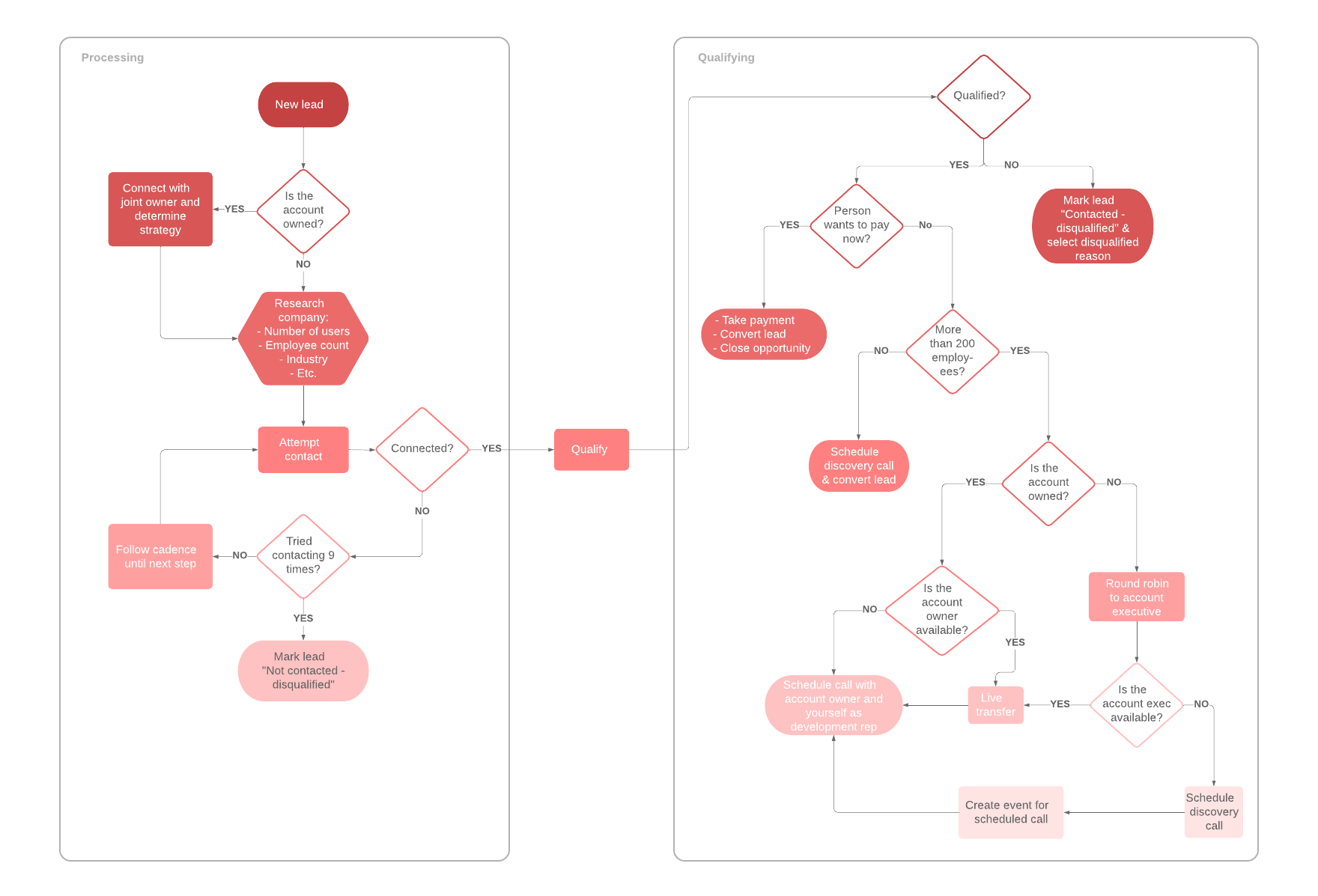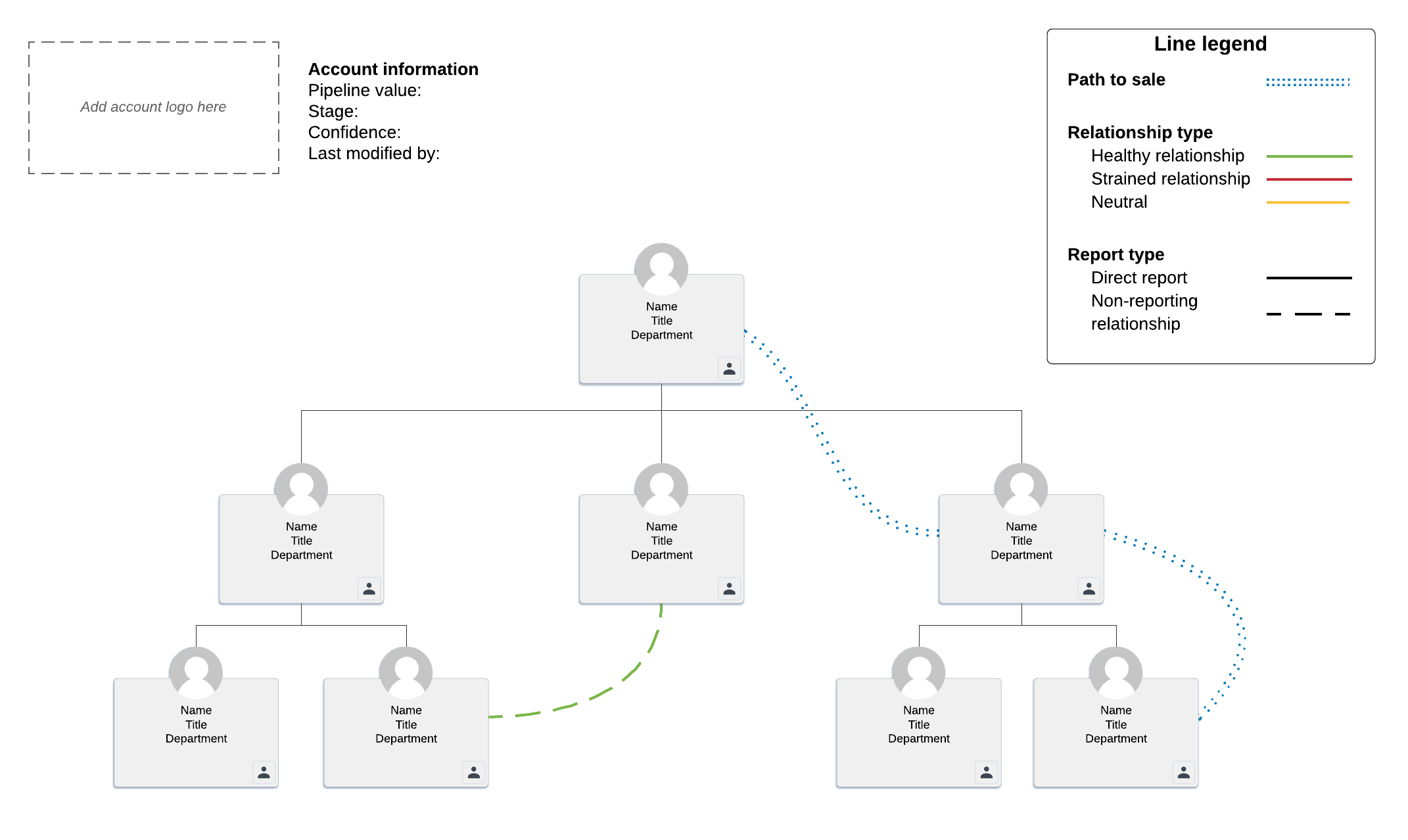
What is BANT and how can it streamline lead generation?
Lucid Content
Reading time: about 6 min
Topics:
Lead qualification is the process of deciding whether the opportunity in front of you (the potential customer) is worth the time it takes to invest in them. It’s an effective way to determine whether a potential customer is truly interested in the opportunity you are presenting.
In fact, every one of us engages in qualifying behavior: “Is this TV show something I want to spend time on?” “Should I order takeout again or attempt to cook?” We weigh information to decide if the opportunity presented to us is worth pursuing.
So as a sales rep, how do you qualify your prospects as a great lead? The BANT sales qualification strategy can help determine whether a lead is likely to be successful.

What is BANT?
Originally conceived by IBM as a way to quickly identify leads who were most likely to make a purchase, BANT is considered the old-school, go-to method of sales and lead qualification. BANT is an acronym for budget, authority, needs, and timeline, and it is a type of sales lead qualification process designed to identify leads worth pursuing. As far as qualifying frameworks go, BANT is pretty straightforward and asks salespeople to consider the following:
- Budget: Does the prospective client have the necessary budget to purchase your product?
- Authority: Does the potential lead have the authority to make a purchase, or are there additional people you need to speak with?
- Needs: What business pain points does your service reduce?
- Timeline: When is the lead looking to make a purchase?
A lead that meets at least three of the four BANT criteria is considered viable, though each sales team may decide what a viable lead looks like to them. BANT sales leads are considered, first and foremost, from a budgetary standpoint. If the potential customer doesn’t have the funds for the product you’re selling, they probably aren’t a qualified opportunity. Keep track of your process with a Lucidchart qualifying leads flowchart.

This lead qualification process saves sales teams time and energy by eliminating or passing over opportunities with no potential.Leads are generated in many different ways: email capture, phone number capture, referral, display ads, and other traditional and digital marketing techniques. However, just because someone gave you their email address or signed up for your newsletter doesn’t mean they’re going to turn out to be a successful lead.
“Wait,” you might be thinking, “isn’t every lead worth chasing down?”
Think of it this way: When you look for new cars, do you look at every single car available, or do you refine your search and include only cars that meet your criteria? Because the first option would take you years, you would probably refine your search. The same process goes for sales.
If the opportunity looks viable, ask more questions to gather information. Here are a few additional questions to consider when using BANT for leads qualification:
Budget
- Do you have a dedicated budget for new technology purchases? What is that budget?
- Are you sharing your budget with any other departments?
- If you had zero budgetary limitations, what would you do?
Authority
- Do we need to include anyone else in our discussion?
- Do you currently use any products similar to ours? Do you anticipate any overlap or redundancies?
- How have past products been received? Is your team receptive to change?
Need
- Tell me about the most frustrating part of your job. How long has this been a frustration?
- Do you currently have plans to address these issues?
- What, if any, roadblocks do you anticipate?
Timeline
- What other issues are you facing? What’s your priority on resolving the issues?
- When are you looking to solve your problem?
- Are you considering any other solutions or services?
Depending on the lead (and their business), your contact might be more than one person. Very few businesses operate from a single person’s sign off—rather, different managers or department heads collaborate to share resources (sometimes budget). Use this to your advantage by tailoring your exchanges to best fit the situation.
Take notes with an account mapping template in Lucidchart.

Although perhaps not as acronym-friendly, you can also approach lead qualification using BANT in any order. If prospect’s timeline seems the most urgent, talk to that pain point first ( TBAN). When a need for a solution supersedes budget, adopt that sense of urgency and offer your product as a solution (NBAT). You can prioritize the acronym in any way you need to best fit your potential customer’s needs. Asking questions and actually pausing to wait for responses will help you get a better read on your contact and nurture the lead generation.
Get started on organizing your pitch with tips on effective selling from a single diagram from Lucidchart.
Additional process options
Lead generation and qualification take time. As your sales team continues to grow, consider these other types of lead qualifying strategies, each with their own opportunity focus:
FAINT
Funds, Authority, Interest, Need, Timing
This lead qualification method looks for leads who may not always plan for a purchase but still have the ability to make a purchase, if the right product comes along. Companies that convert well with a FAINT approach tend to have known purchasing power, which is why funding leads the discussion.
ANUM
Authority, Need, Urgency, Money
Begin by identifying the decision maker, and then look to solve an existing problem. Ask the prospect how soon can they decide on a solution and if they have the money to make the purchase.
CHAMP
Changes, Authority, Money, Prioritization
CHAMP is about selling to overcome a problem. The seller is capitalizing on the lead’s urgent need to overcome a challenge.
MEDDIC
Metrics, Economic Buyer, Decision Criteria, Decision Process, Identify Pain, Champion
The MEDDIC approach was developed to help increase the accuracy of forecasting.
Whichever methodology your team decides on, a Lucidchart qualifying leads flowchart is a fast and easy way to track the progress of your lead nurturing.
How do you know if lead qualification is working?
Even with all of your hard work, planning, and effort, it can be hard to tell if your time will be rewarded. Does this lead actually have an intent to buy? While nothing is ever a sure thing, here are a few positive signs that your lead is warming up:
- The prospect continues the conversation by asking questions. Ask some of your own questions to keep the information flowing.
- The lead has been thinking about a specific business challenge for a while and is citing specific examples. Well-worded answers could indicate the lead has been dwelling on this issue for some time and is ready to make a change.
- The lead has an idea of the solution they’re looking for. Those in a position of authority tend to have a pulse on what their business is struggling with, what’s going right, and what solutions might fit best.
As you continue to refine and determine a customer profile of what a successful customer looks like, your lead qualification will become more refined. Along the way, lead qualification can also help your employees become experts on the product as they interact with various leads and work to overcome objections.
Lead qualification helps to eliminate the element of surprise as your sales team becomes more and more seasoned at spotting viable leads in a sea of potential opportunities. If you find your leads aren’t going anywhere, perhaps it’s time to reexamine your strategy and look for opportunities in a different audience.

Establish your lead generation process and map it out to ensure repeatable success for your sales team.
Learn howAbout Lucidchart
Lucidchart, a cloud-based intelligent diagramming application, is a core component of Lucid Software's Visual Collaboration Suite. This intuitive, cloud-based solution empowers teams to collaborate in real-time to build flowcharts, mockups, UML diagrams, customer journey maps, and more. Lucidchart propels teams forward to build the future faster. Lucid is proud to serve top businesses around the world, including customers such as Google, GE, and NBC Universal, and 99% of the Fortune 500. Lucid partners with industry leaders, including Google, Atlassian, and Microsoft. Since its founding, Lucid has received numerous awards for its products, business, and workplace culture. For more information, visit lucidchart.com.
Related articles
Close more deals with the MEDDIC sales process
Learn what the MEDDIC sales process is, how to implement it, and how it can help you close more deals.
How to build a successful sales process and make the gong ring
Learn how to create an effective sales process capable of scaling at the same rate your company is. Lucidchart will help you visualize the sales process.
